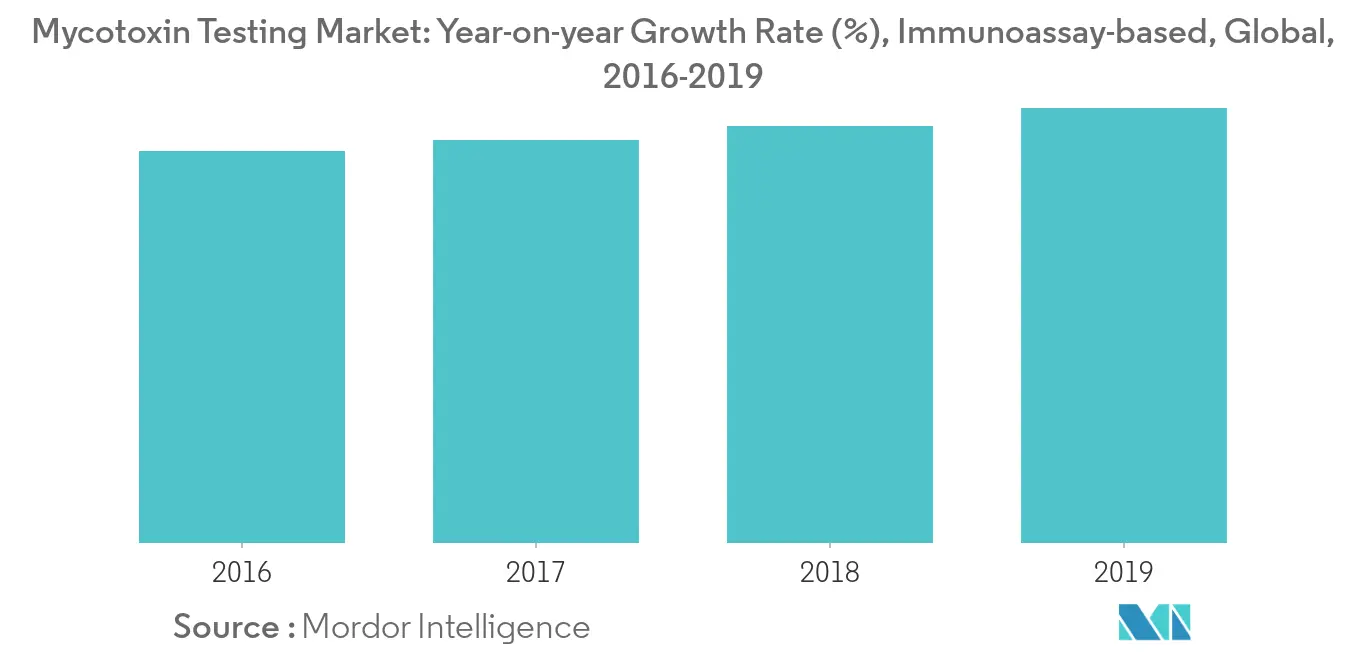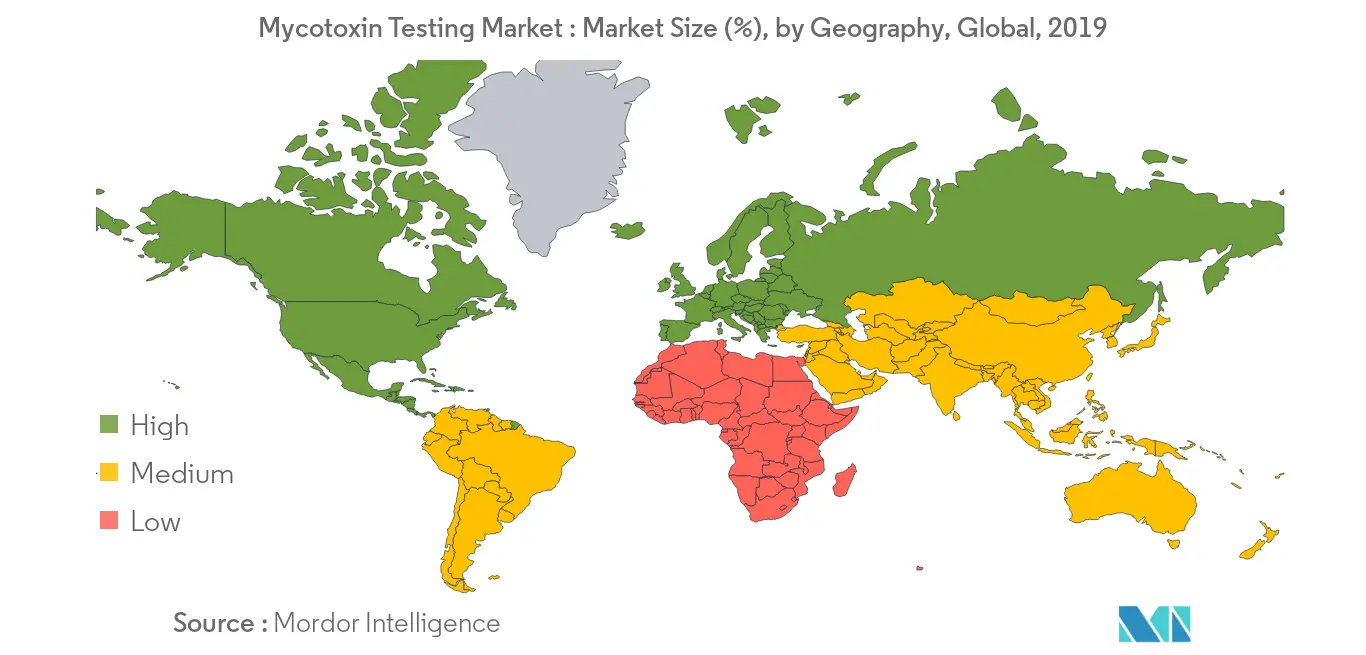Market Trends of Mycotoxin Testing Industry
This section covers the major market trends shaping the Mycotoxin Testing Market according to our research experts:
Immunoassay-based is the Fastest Growing Mycotoxin Testing Technology
ELISA (enzyme-linked immunosorbent assay) is one of the most popular immunologically-based methods used in test kits for the analysis of mycotoxins in foods and feeds. ELISA method for detection of mycotoxins has been used by a number of food safety manufacturers and has been available for a decade now. The method is based on the ability of a specific antibody to distinguish the three-dimensional structure of a specific mycotoxin.
ELISA mycotoxin tests are considered as high throughput assays with low sample volume requirements and often less sample extract clean-up procedures in comparison to the conventional methods, such as TLC and HPLC. ELISA detection method is reliable, rapid, specific, sensitive, easier, and portable for use in the field for the detection of mycotoxins in foods and feeds.

Europe Held the Highest Share in Mycotoxin Testing Market
Aflatoxin contamination of agricultural commodities poses considerable risk to human and livestock health and economic losses. Exposure of human to aflatoxin leads to several health-related conditions, including acute and chronic aflatoxicosis, immune suppression, liver cancer, liver cirrhosis, stunted growth in children, and many others. Aflatoxins are detected in several crops, especially in maize and groundnuts. Aflatoxin is the most important contaminant on the Rapid Alert System for Food and Feed (RASFF) of the European Union. In 2008, aflatoxins alone were responsible for almost 30% of all the notifications to the RASFF system (902 notifications). Fumonisins FB1 and FB2 have been found in rural areas of South Africa, in homegrown corn produced and consumed by the people living in those areas. Commercial corn-based human food products from retail outlets in several countries contain fumonisins


